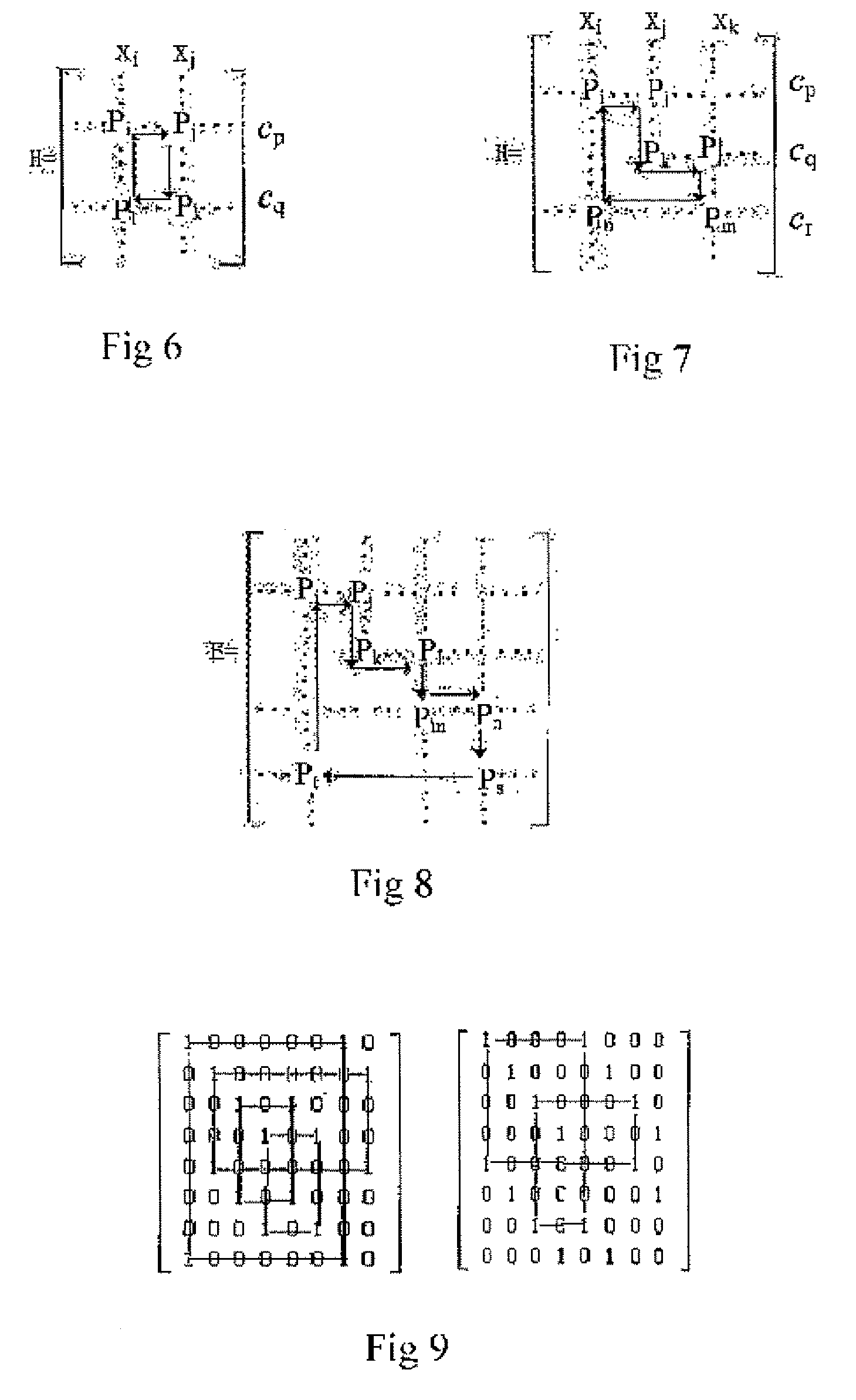Basic Matrix, Coder/Encoder and Generation Method of the Low Density Parity Check Codes
- Summary
- Abstract
- Description
- Claims
- Application Information
AI Technical Summary
Benefits of technology
Problems solved by technology
Method used
Image
Examples
Embodiment Construction
[0086]Hereinafter, the embodiments of technical schemes will be further described in detail in combination with the drawings:
[0087]FIG. 2 is the schematic view of the short cycle with length 4 in bi-partite graph. As illustrated in the figure, the thickened solid line denotes that the information bits x1, x2 and the check bits c1, c2 constitute a cycle with length 4.
[0088]FIG. 3 is the schematic view of the short cycle with length 6 in bi-partite graph. As illustrated in the figure, the thickened solid line denotes that the information bits x1, x2, x3 and the check bits c1, c2, c4 constitute a cycle with length 6.
[0089]The concept of girth is used to quantitatively describe the short cycles in the bi-partite graph. According to graph theory, the girth of the bi-partite graph refers to the length of the shortest cycle in the graph, for instance, for a bi-partite graph having cycles with 6, 8, 10, 12 and even longer lengths, its girth will be 6. In the bi-partite graph, the girth at a...
PUM
 Login to View More
Login to View More Abstract
Description
Claims
Application Information
 Login to View More
Login to View More - R&D
- Intellectual Property
- Life Sciences
- Materials
- Tech Scout
- Unparalleled Data Quality
- Higher Quality Content
- 60% Fewer Hallucinations
Browse by: Latest US Patents, China's latest patents, Technical Efficacy Thesaurus, Application Domain, Technology Topic, Popular Technical Reports.
© 2025 PatSnap. All rights reserved.Legal|Privacy policy|Modern Slavery Act Transparency Statement|Sitemap|About US| Contact US: help@patsnap.com



